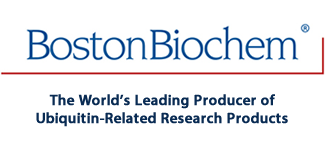
Recombinant Human His6-Otubain-1 Protein, CF Summary
Recombinant Human His6-Otubain-1 is a Ubiquitin-specific deconjugating enzyme. Reaction conditions will need to be optimized for each specific application. We recommend an initial His6-Otubain-1 concentration of 1-5 μM.
Product Datasheets
Carrier Free
CF stands for Carrier Free (CF). We typically add Bovine Serum Albumin (BSA) as a carrier protein to our recombinant proteins.Adding a carrier protein enhances protein stability, increases shelf-life, and allows the recombinant protein to be stored at a more dilute concentration.The carrier free version does not contain BSA.
In general, we advise purchasing the recombinant protein with BSA for use in cell or tissue culture, or as an ELISA standard.In contrast, the carrier free protein is recommended for applications, in which the presence of BSA could interfere.
E-522B
| Formulation | Xmg/ml (X μM) in 50 mM HEPES pH 7.5, 100 mM NaCl, 1 mM TCEP |
| Shipping | The product is shipped with dry ice or equivalent. Upon receipt, store it immediately at the temperature recommended below. |
| Stability & Storage: | Use a manual defrost freezer and avoid repeated freeze-thaw cycles.
|
Reconstitution Calculator
Background: Otubain-1
Otubain-1, also known as OTUB1 or Ubiquitin Thioesterase, is a member of the conserved ovarian tumor (OTU) protein family. It is a 271 amino acid (aa) polypeptide with a predicted molecular weight of 32 kDa. Otubain-1 is 99% identical at the aa level to its mouse and rat orthologs. It is a deubiquitinating enzyme (DUB) that appears to exhibit specificity for K48 Ubiquitin linkages (1). However, Otubain-1 may also affect K63 linkages independent of DUB activity. For instance, Otubain-1 can directly bind to and suppress UBC13 (UBE2N), a Ubiquitin Ligase (E2) that catalyzes the formation K63-linked Ubiquitin chains in response to DNA damage (2-4).
- Wang, T. et al. (2009) J. Mol. Biol. 386:1011.
- Nakada, S. et al. (2010) Nature 466:941
- Wiener, R. et al. (2012) Nature 483:618.
- Sato, Y. et al. (2012) J. Biol. Chem. 287:25860.
FAQs
No product specific FAQs exist for this product, however you may
View all Proteins and Enzyme FAQsReviews for Recombinant Human His6-Otubain-1 Protein, CF
Average Rating: 5(Based on 1 Review)
Have you used Recombinant Human His6-Otubain-1 Protein, CF?
Submit a review and receive an Amazon gift card.
$25/€18/£15/$25CAN/¥75 Yuan/¥1250 Yen for a review with an image
$10/€7/£6/$10 CAD/¥70 Yuan/¥1110 Yen for a review without an image
Filter by:

ebiomall.com






>
>
>
>
>
>
>
>
>
>
>
多谢!
不知道能不能直接买到大鼠抗豚鼠血管IgG的ELISA试剂盒。
如果买不到这种试剂盒,用空白板的话(就是反应孔中没有抗原或者抗体包被),把自制的豚鼠血管抗原加到反应孔中进行孵育,能不能使抗原附着在孔壁上?这样的话就可以按照elisa的操作步骤进行大鼠血清检测了。
目前的设想是自制抗原,粉碎豚鼠的血管,制成悬液,通过反复多次的冻融,离心后收集上清液作为抗原(即豚鼠血管抗原)。
然后将抗原加入到elisa的反应孔中(这种是特制的空白板,就是反应孔中没有抗原或抗体包被)进行孵育,使豚鼠血管抗原附着在孔壁上,就是让反应孔充当固相载体,形成固相抗原。倒掉多余的抗原。
再加入待检测的大鼠血清,这样血清中的特异性抗豚鼠血管IgG就可以跟固相的抗原结合,形成固相抗原抗体复合物。
加入酶标的兔抗鼠或者羊抗鼠IgG,形成酶标的抗原抗体复合物。
然后就是一些显色步骤。
现在关键的问题就是抗原加入空白板,能不能形成固相抗原,如果不能跟孔壁附着的话,在后面洗涤的过程中就被洗掉了,那就没办法完成检测了。
请各位大侠给指条明路啊!!!小弟在此多谢了!!!









